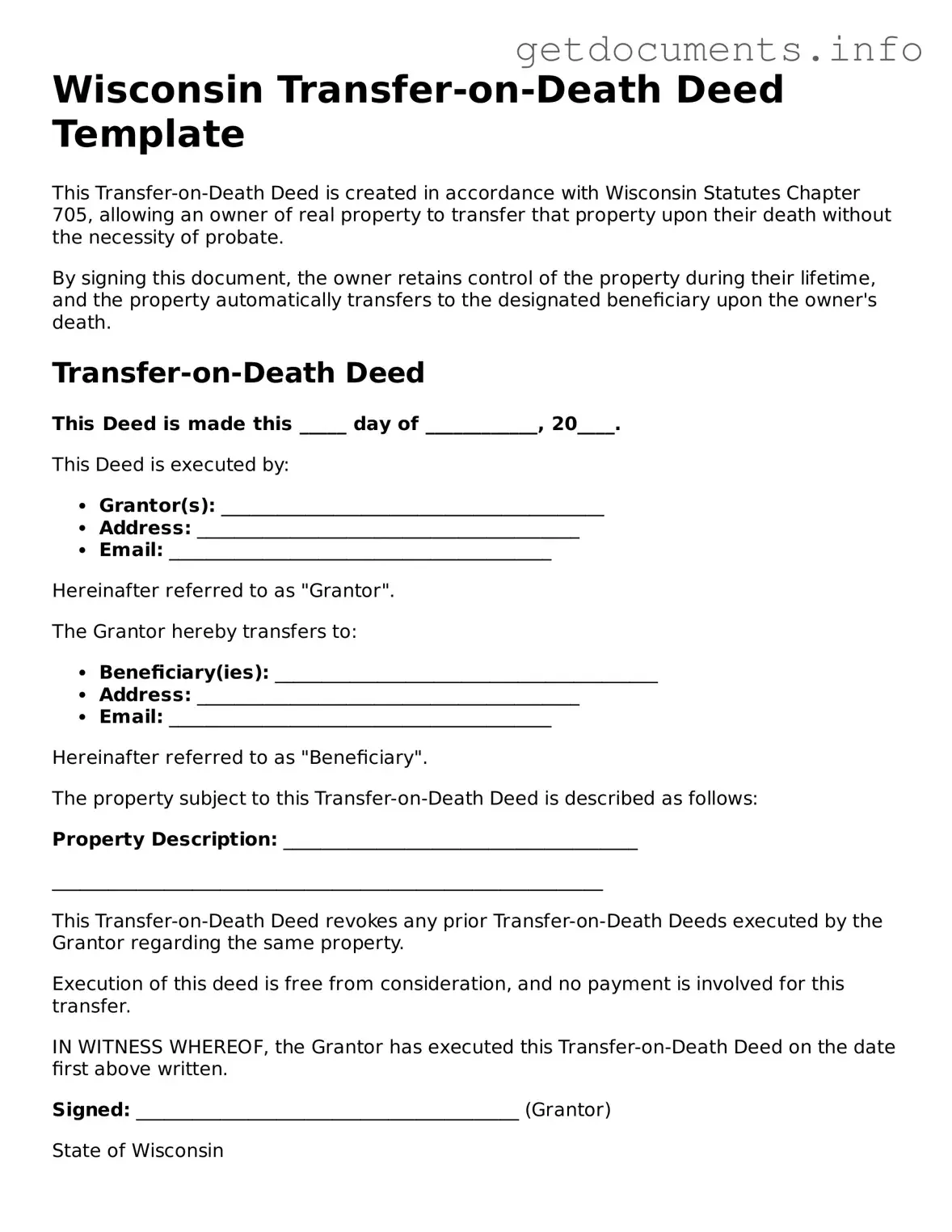The Wisconsin Transfer-on-Death Deed (TODD) form serves as a valuable tool for property owners looking to simplify the transfer of real estate upon their death. This legal document allows individuals to designate beneficiaries who will inherit their property directly, bypassing the often lengthy and costly probate process. By completing and recording a TODD, property owners can maintain full control of their assets during their lifetime while ensuring a smooth transition for their heirs. The form requires specific information, including the property description and the names of the beneficiaries, to ensure clarity and prevent disputes. Importantly, the TODD can be revoked or modified at any time before the owner's death, providing flexibility in estate planning. Understanding the nuances of this form is essential for anyone considering it as part of their estate strategy, as it can significantly impact how assets are managed and passed on to future generations.
